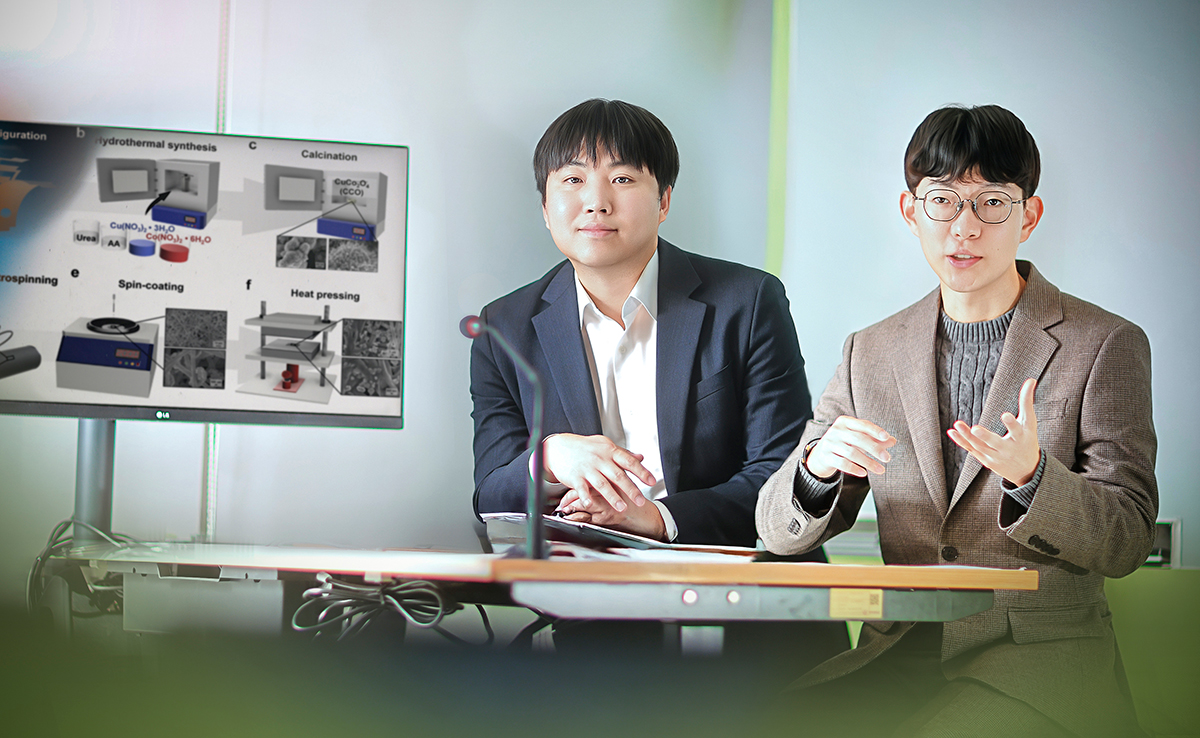News
Harvesting Energy from Motion: Kyung Hee Team Develops Advanced Self-Powered Sensor Technologies
2025-05-28 Research

Seeking smarter ways to use everyday energy
Professor Daewon Kim and his research team at the Department of Electronic Engineering have made new advances in triboelectric nanogenerators (TENGs). The findings were published in two renowned international journals: Advanced Functional Materials (IF=18.5) and Biosensors and Bioelectronics (IF=10.7).
In the first study, the team developed a tilt sensor capable of detecting motion in any direction. Conventional sensors often work only within limited angles, but this new design uses a triboelectric nanogenerator and a small internal ball to enable full-spherical sensing.
As the ball rolls across a grid-like surface inside the device, it generates electrical signals. The system analyzes the timing and direction of these signal peaks to calculate tilt angles in real time.
The researchers improved a key component of the nanogenerator to boost its electrical output, creating a new composite by blending nanoparticles with polymer fibers. As a result, the device achieved a two- to three-fold increase in electrical output, allowing the tilt sensor to operate reliably in various environments without relying on an external power source. “This technology holds strong potential for use in aerospace, drones, and a range of other industries,” said Student Hyunwoo Cho, who led the study. He is a student in the combined master’s and PhD program in the Department of Electronic and Information Convergence Engineering.
In the second study, the team developed an implantable nanogenerator that harvests energy from neck movement. “While joints like the elbow or shoulder are typically known for frequent motion, the neck is just as active,” Student Cho explained. “We confirmed in earlier research that everyday actions like nodding or swallowing generate enough mechanical energy to be captured, which led us to explore the neck as a promising site for energy harvesting.”
The device is made of soft, flexible materials, allowing it to be worn on the skin or implanted under it. Its multilayer interdigitated electrode (IDE) structure enables efficient power generation from even slight movements, ensuring minimal discomfort whether worn or implanted.
To improve energy conversion efficiency under low-force conditions, the team applied an embedded switch-controlled capacitor. “This design uses the device’s own motion to control the capacitor, eliminating the need for complex circuitry and achieving a short-circuit current output 1,454 times higher than conventional models,” Student Cho explained. The technology is expected to go beyond energy harvesting and find applications in wearable and implantable bioelectronic devices.

-
News List
-
Highlight News
-
Info
- University Communication & Press
- +82-2-961-0106
- khsd3080@khu.ac.kr

